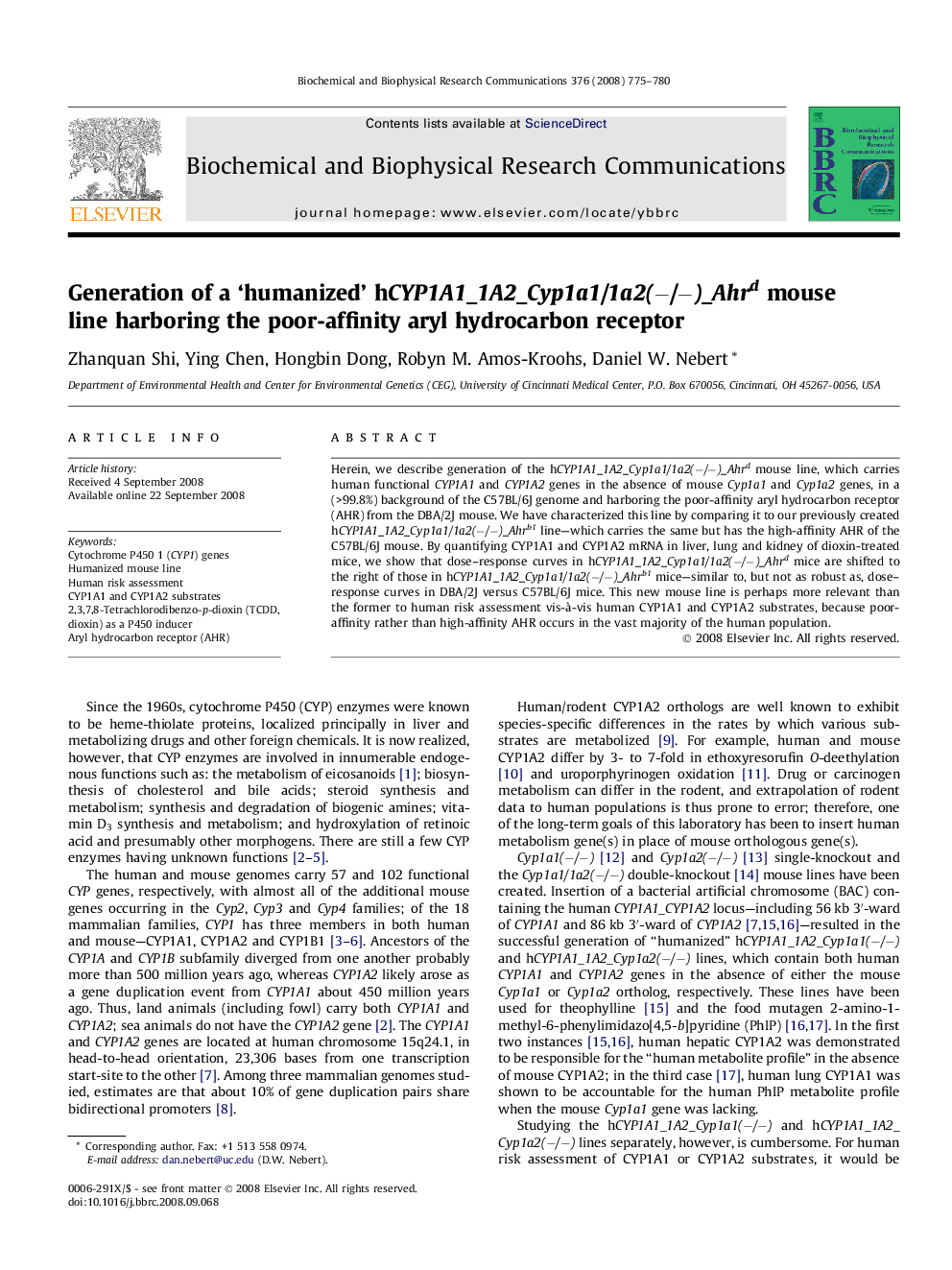| Article ID | Journal | Published Year | Pages | File Type |
|---|---|---|---|---|
| 1934437 | Biochemical and Biophysical Research Communications | 2008 | 6 Pages |
Abstract
Herein, we describe generation of the hCYP1A1_1A2_Cyp1a1/1a2(â/â)_Ahrd mouse line, which carries human functional CYP1A1 and CYP1A2 genes in the absence of mouse Cyp1a1 and Cyp1a2 genes, in a (>99.8%) background of the C57BL/6J genome and harboring the poor-affinity aryl hydrocarbon receptor (AHR) from the DBA/2J mouse. We have characterized this line by comparing it to our previously created hCYP1A1_1A2_Cyp1a1/1a2(â/â)_Ahrb1 line-which carries the same but has the high-affinity AHR of the C57BL/6J mouse. By quantifying CYP1A1 and CYP1A2 mRNA in liver, lung and kidney of dioxin-treated mice, we show that dose-response curves in hCYP1A1_1A2_Cyp1a1/1a2(â/â)_Ahrd mice are shifted to the right of those in hCYP1A1_1A2_Cyp1a1/1a2(â/â)_Ahrb1 mice-similar to, but not as robust as, dose-response curves in DBA/2J versus C57BL/6J mice. This new mouse line is perhaps more relevant than the former to human risk assessment vis-Ã -vis human CYP1A1 and CYP1A2 substrates, because poor-affinity rather than high-affinity AHR occurs in the vast majority of the human population.
Related Topics
Life Sciences
Biochemistry, Genetics and Molecular Biology
Biochemistry
Authors
Zhanquan Shi, Ying Chen, Hongbin Dong, Robyn M. Amos-Kroohs, Daniel W. Nebert,
